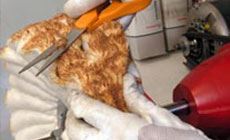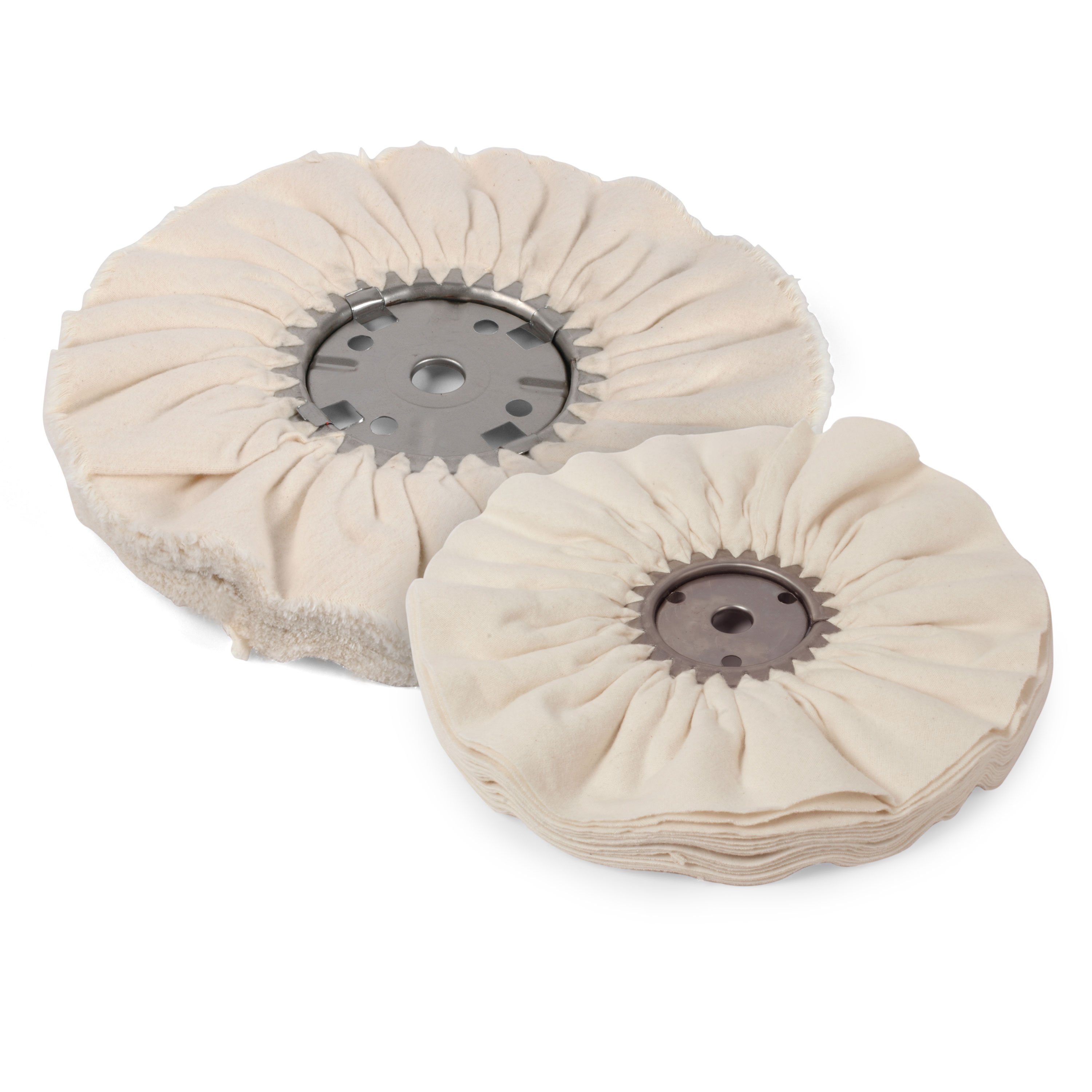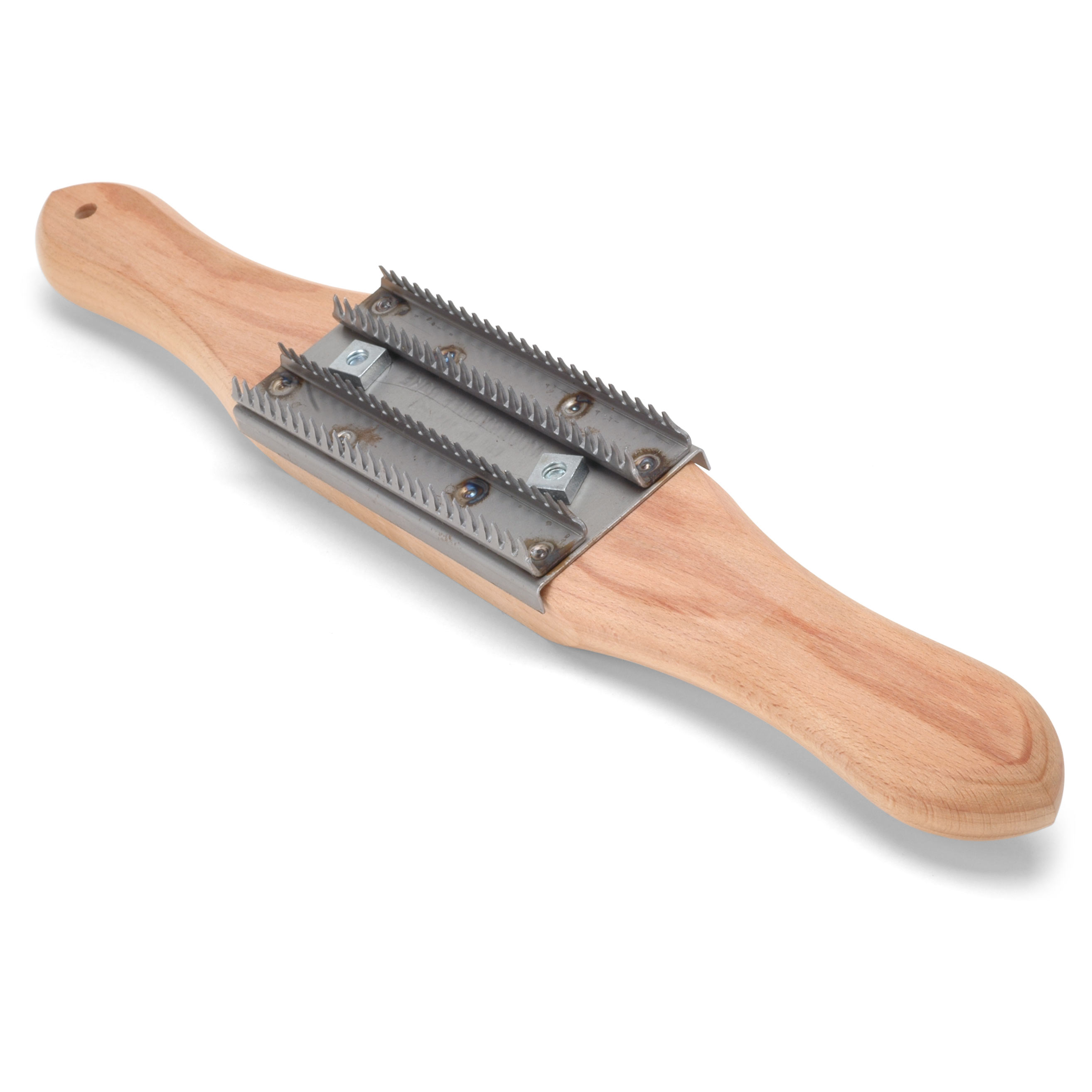Give your buffer a haircut, and store it on the wall
Here’s how to break in a set of cloth buffing wheels. New wheels are shaggy and need smoothing, so do this barber routine with a wheel rake and scissors before you buff an instrument. Before you put buffing compound on a new wheel, turn the buffer on and use a wheel rake to remove loose threads and soften the cloth wheel. Next, turn the buffer off and use a scissors to snip away threads and any bits of cloth sticking out. Now buff a clean hardwood board for a couple of minutes. This breaks in the wheel and heats it so it will pick up buffing compound faster and more evenly across its face. Add the compound when the wheel is spinning. After adding compound, buff the clean board again, then stop the buffer for another scissors-trim. In the picture here, my wheel is brown with compound; a fresh wheel won't look like that until it's done a lot of buffing jobs. Even after they're loaded with compound, the wheels still need raking and trimming now and then. If you don’t do finish work often, you can hang your buffing arbor on the wall to free up floor space. I made a small tabletop to mount my buffing arbor together with its motor for instant setup and teardown. A ShopStand supports the buffer in a minimum of floor space, and when I’m not buffing the stand doubles as a support for my Neck Jig. I layered three boards of 3/4" pine to make the table rugged. Glued and screwed together, it measures 14" x 18" x 2-1/4". The underside has a 2" x 2"x4" chunk of wood to be gripped in the jaws of the angle vise on top of the ShopStand. Hex bolts (3/8"-16) install from the bottom up to hold the motor and buffing arbor. I added rubber washers to dampen vibrations. The front-right corner is cut at an angle to make room for the buffing wheel on that side. I made the table a bit longer than the motor required -- the extra room gives me a place to set my rake and buffing compound bars. I had some red and black lacquer on hand, so for the heck of it I gave my buffer a racing stripe! The place to look in your local heating/cooling supplier. Ask for a furnace motor Mine is an Emerson #8100, 1/3 h.p. motor that spins at 1725rpm - and it's quite.Give your buffer a haircut so it won't leave marks on the finish

Use a rake to prepare buffing wheels

For the small shop: store your buffer on the wall



Where to find a good motor in your town:






